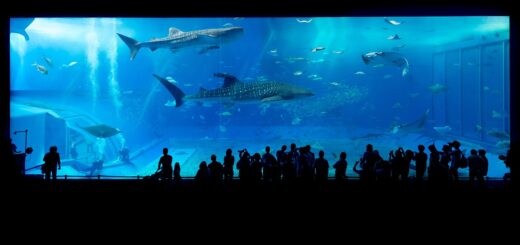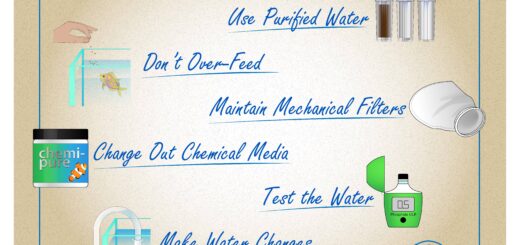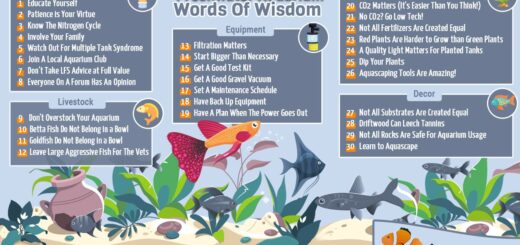Aesthetic Aquascaping: Designing Stunning Underwater Landscapes
You’re about to embark on a fascinating journey into the world of aesthetic aquascaping – the art of designing breathtaking underwater landscapes. In this article, you’ll discover the secrets behind creating stunning aquascapes that resemble vibrant forests, majestic mountains, and serene meadows beneath the water’s surface. From selecting the right plants and rocks to mastering the art of balancing light and nutrient levels, get ready to be captivated by the beauty and intricacy of this unique form of artistry. Whether you’re an experienced aquarist or a novice ready to plunge into this mesmerizing hobby, the wonders of aesthetic aquascaping await you.
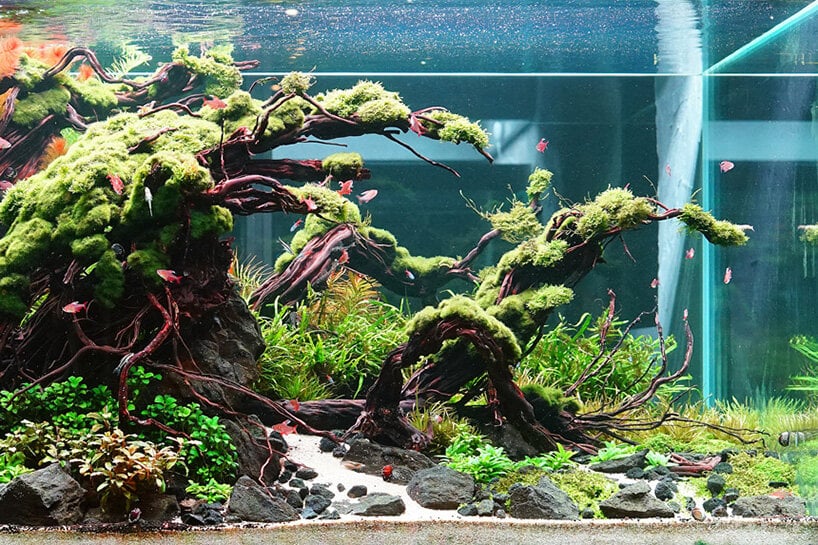
This image is property of static.designboom.com.
Click here…Your Spirit Animal is Trying to Connect…
Understanding Aquascaping
What is aquascaping?
Aquascaping is the art of creating and designing stunning underwater landscapes in aquariums. It involves arranging various elements such as plants, substrate, hardscape materials, and fish to create a harmonious and visually pleasing environment. It combines the principles of design and aesthetics with the practicalities of creating a healthy and thriving aquarium ecosystem.
The importance of aquascaping
Aquascaping is not only about creating a beautiful aquarium, but it also plays a crucial role in the overall health and well-being of the aquatic inhabitants. A well-designed aquascape provides a natural and secure environment for fish, promotes their natural behaviors, and creates a sense of tranquility and serenity for viewers. Additionally, aquascaping can serve as a therapeutic and stress-relieving activity for hobbyists, as well as a learning experience for those interested in aquatic ecosystems.
Different styles of aquascaping
There are several different styles of aquascaping, each with its own unique characteristics and aesthetics. The most popular styles include Nature Aquarium, Dutch Aquarium, Iwagumi, and Biotope aquascapes. Nature Aquarium focuses on creating a natural-looking underwater landscape with a diverse range of plant species. Dutch Aquarium, on the other hand, emphasizes the use of vibrant colors and symmetry with densely planted tanks. Iwagumi aquascapes center around the arrangement of rocks to create minimalist and serene landscapes, while Biotope aquascapes aim to replicate specific natural habitats with accurate plant and fish species selection.
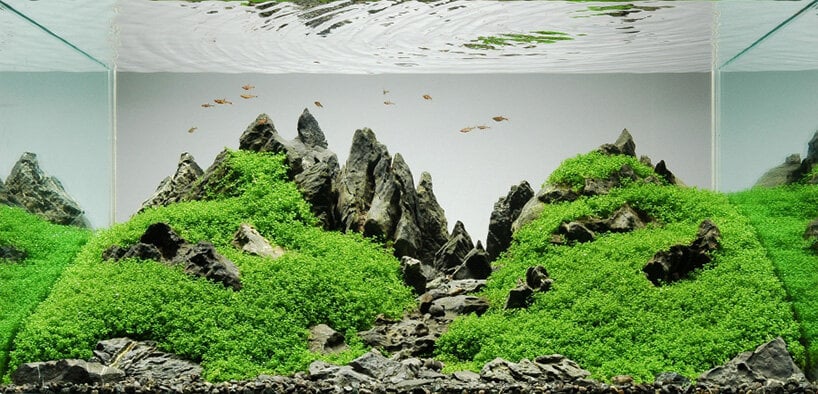
This image is property of www.designboom.com.
Click here…Your Spirit Animal is Trying to Connect…
Essential Components of Aquascaping
Aquarium tank
The aquarium tank itself is the foundation of any aquascape. It’s vital to choose a tank that suits the desired style and size of your aquascape. A larger tank provides more space for creativity and allows for a more stable ecosystem. Consider the shape, dimensions, and material of the tank, ensuring it complements your overall vision. Rimless tanks are often favored for their sleek and modern look, while glass tanks offer crystal-clear visibility.
Substrate
The substrate, or the material placed at the bottom of the tank, serves as a rooting medium for aquatic plants and provides a natural appearance to the aquarium. There are various types of substrates available, such as gravel, sand, and specialized substrates designed for planted tanks. Consider the needs of your chosen plant species when selecting a substrate. Fine-grained substrates are ideal for delicate plants, while larger particles can be used for more hardy species.
Plants
Plants play a crucial role in aquascaping by adding beauty, oxygenation, and a sense of naturalism to the environment. They also provide shelter and hiding places for fish and contribute to the overall balance of the ecosystem. Choose aquatic plant species that are suitable for your desired style and level of maintenance. Some popular plant choices include Java fern, Anubias, Amazon sword, and carpeting plants like dwarf hairgrass or Monte Carlo.
Hardscape materials
Hardscape materials, such as rocks and driftwood, are used to create structure, focal points, and interesting visual elements in an aquascape. They can be arranged in various ways to achieve the desired aesthetic and to mimic natural landscapes. When selecting hardscape materials, consider their composition and how they will interact with the water chemistry of the tank. Make sure to properly clean and prepare the materials before adding them to the aquarium to avoid introducing unwanted substances.
Water
Water is the lifeblood of any aquarium, and maintaining the proper water parameters is essential for the health of the aquatic inhabitants. Regular water changes, appropriate temperature control, and chemical balance are crucial factors in creating a thriving aquascape. Understanding the specific needs of the plant and fish species in your aquascape will help you maintain the optimal water conditions for their growth and well-being.
Lighting
Proper lighting is paramount in aquascaping, as it directly affects the growth and health of aquatic plants. Different plant species require varying levels of light intensity and duration. LED lights are commonly used in aquascapes for their energy efficiency and ability to provide a wide spectrum of light. Position the lights strategically to ensure even distribution and to avoid shadows. Consider using a timer to establish a consistent lighting schedule, mimicking the natural day and night cycles.
Filtration and circulation
Filtration and circulation systems are essential for maintaining the water quality and clarity of the aquarium. A good filtration system removes impurities, toxins, and excess nutrients from the water, preventing the build-up of harmful substances. Circulation helps distribute oxygen, nutrients, and carbon dioxide evenly throughout the tank, promoting the health of plants and fish. Choose a filter that is appropriate for the size of your aquarium and consider incorporating a powerhead or wavemaker to enhance water flow.
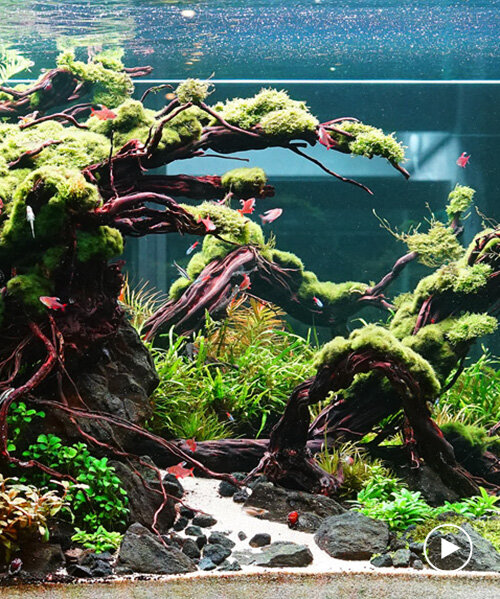
This image is property of static.designboom.com.
Choosing the Right Aquarium Tank
Size and dimensions
When selecting an aquarium tank for your aquascape, size and dimensions are significant considerations. The size of the tank determines the available space for planting, hardscaping, and fish. Larger tanks offer more room for creativity and provide a more stable environment, with greater water volume to dilute any fluctuations in water parameters. Consider the available space in your home and the level of maintenance you’re willing to commit to when deciding on the size.
The dimensions of the tank are also crucial, as they determine the layout and balance of your aquascape. Long and shallow tanks are popular choices as they provide a wide area for the foreground and mid-ground plants. Tall and narrow tanks are suitable for vertical scapes or when limited space is available.
Material and construction
The material and construction of the aquarium tank can impact its durability, aesthetics, and compatibility with different aquatic environments. Glass tanks are a common choice as they offer excellent visibility, are scratch-resistant, and provide a sleek and modern look. Acrylic tanks are an alternative option, known for their lightweight, impact resistance, and flexibility in design. However, acrylic tanks are more prone to scratches and can discolor over time.
Consider the thickness of the tank, as thicker glass or acrylic provides increased strength and stability. Ensure that the seams and joints are well-constructed and properly sealed to prevent leaks.
Considerations for different aquatic environments
Different aquatic environments require specific considerations when choosing an aquarium tank. Freshwater aquascapes typically have less demanding requirements, as long as the tank can provide adequate space for plants and fish. Marine environments, such as reef tanks, may require additional structural support for live rock and corals.
If you plan to keep coldwater species or tropical fish, consider the heating and cooling requirements of the tank. Coldwater tanks may need additional insulation to maintain stable temperatures, while tropical tanks require a heater to replicate the desired water conditions.
Ultimately, select an aquarium tank that suits your desired aquascape style, available space, and compatibility with the aquatic environment you wish to create. A well-chosen tank will provide a solid foundation for your aquascaping endeavors.


